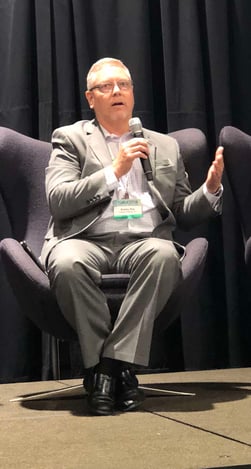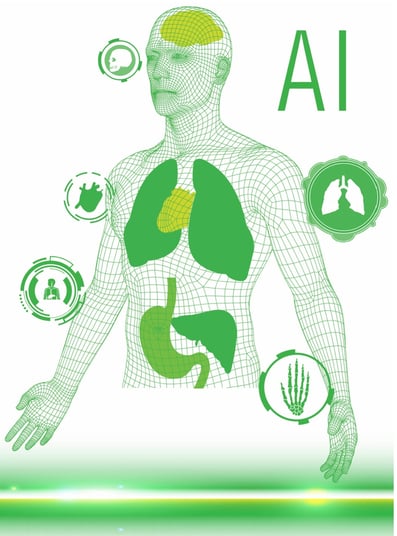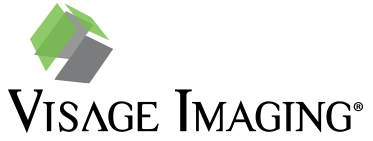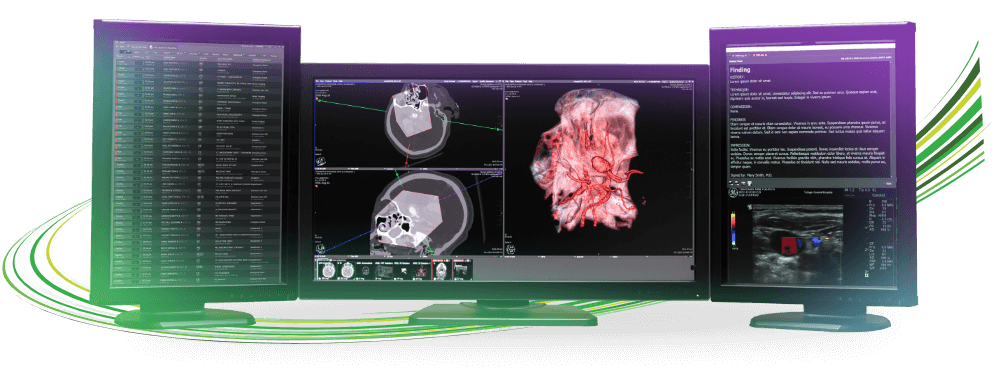SIIM 2018 | Visage's Top Five
- Visage 7
- Enterprise Imaging Platform
- top five
- artificial intelligence
- AI
- Deconstructed PACS
- SIIM 2018

We absolutely love the annual SIIM meeting, and 2018 was no different. It’s absolutely special when imaging professionals from around the world come together for the year’s premier imaging informatics meeting. Professional and vendor attendance at SIIM continues to climb to new heights, and so does Visage! We’ve developed an RSNA “top five” for the last seven years, and decided the time has come to do the same for SIIM. If you were able to make it to SIIM, we hope our insights resonate with your experience, and if you were unable to attend, we hope you find the top five useful.
Now, on with Visage’s Top Five!
Visage Imaging | SIIM 2018
1 - "Inspiring Collaboration" from the Most Anticipated Go-Live in Recent Memory
Days before SIIM 2018, we recorded a video and blogpost, “I Heard it Through the Go-Live”, that detailed Visage’s recent experience bringing one of the most prestigious healthcare institutions live on Visage 7. With SIIM on the horizon, we knew this institution’s go-live would inspire significant discussion at the meeting. This institution sent a large contingent of 23 experts to SIIM (which was the second most of all institutions based on pre-registration lists), many of which were active in the SIIM educational program as presenters, moderators, panelists and poster presenters.
We had a steady stream of this institution’s staff in the Visage booth, chatting it up with their imaging informatics peers at likeminded Visage customers, as well as other SIIM attendees evaluating Visage 7. The resulting discussions were enthusiastic, with many focused on best practices for governance, enterprise-level hanging protocol management, change management and feedback pre/post go-live. Additionally, I had the opportunity to take in several educational sessions led by experts from this institution where they would periodically add insights about their “new PACS”.
The SIIM 2018 theme of “Inspiring Collaboration” was really taken to heart by this institution, as they were truly inspiring and most importantly, fostering collaboration at every turn. Visage is extremely proud of the unprecedented imaging transformation that has occurred at this institution. Best practices will undoubtedly continue to be shared with the industry and Visage customers worldwide.
2 - Open Discussion about Enterprise Viewers
It was a refreshing change to have the discussion of Enterprise Viewers front and center at numerous roundtables, whiteboard, and #AskIndustry sessions at SIIM 2018. In particular, there was a focused roundtable discussion, “Selecting an Enterprise Imaging Viewer” and an #AskIndustry Session, “Exploring the Use of Enterprise Viewers as Diagnostic Viewers”. While the topic obviously has been raised in prior meetings, the tenor this year was different. Perhaps it’s because the implementation of enterprise viewers is more widespread? Or maybe the interactive sessions (versus prior year presentations) brought out more authentic conversation? Whatever the reason, the discussion this year seems to have been a more open discussion than in the past.

Visage's Bobby Roe, Director of Solutions Architecture and Customer Experience
from the SIIM 2018 #AskIndustry Session
Just a few years ago, “enterprise viewer” was considered to be the “holy grail” that would solve all of the limitations of legacy PACS. Fast forward to today, the initial buzz has worn off, and enterprise viewers are considered no different than any other technology, varying widely across the board. Each enterprise viewer is different, and by name alone not necessarily the solution to every institution’s problems. The following enlightening details were discussed during the various enterprise viewer sessions at SIIM:
- Diagnostic interpretation varies widely across enterprise viewers. While some enterprise viewers are cleared for diagnostic interpretation, most only offer diagnostic interpretation for limited workflows and one-off reads. On the other side of the equation, only the most capable enterprise viewers support diagnostic interpretation at enterprise scale, enabling the replacement of legacy PACS.
- Platform varies widely across enterprise viewers. Some enterprise viewers are limited to the capabilities of the enterprise viewer itself, whereas others are differentiated by the strength of the underlying enterprise imaging platform. Without a platform, updates to individual viewers may become problematic to test, train and operationalize in production. This is further complicated when multiple iterations of the enterprise viewer are used in production.
- Performance (speed) varies widely across enterprise viewers, based on modality/data type and payload size, as well as the workflow required (radiology, cardiology, multimedia, non-DICOM, Encounter-based Imaging Workflow), local/remote access, and the bandwidth/latency of the network connections. While some vendors use server-side and streaming technologies, the actual production speed results vary greatly.
- Feature/functionality varies widely across enterprise viewers. Some enterprise viewers have multiple versions, for different workflows, with “lightweight” versions frequently disappointing end users with “unusable” results.
- Security capabilities and the ability to customize security implementations per individual institutional requirements varies widely across enterprise viewers.
- Accessibility varies widely across enterprise viewers, whether access is local or remote, by internal or external physicians, PC or Mac, and client-based or mobile devices. From a usability perspective, many browser-based enterprise viewers do not widely support gesture-based inputs on mobile devices, versus native apps designed for iOS devices.
- Interoperability varies widely across enterprise viewers, from the support of standards, to the ability to integrate with the EHR and everywhere in between. For example, no zero footprint/HTML5 viewers provide the level of interoperability required for the integration required for the orchestration of diagnostic interpretation. A little known fact is that when diagnostic workflow is required, vendors with zero footprint viewers cleared for diagnostic use instead use non-browser-based “apps” due to the interoperability limitations and dependencies of the web browser.
3 - Artificial Intelligence (AI)
The drumbeat of AI continued at SIIM 2018, including a record 22 “Start-Up Street” vendors, most of which promote AI-based solutions. SIIM’s educational program include dedicated education sessions on AI, the AI smack-down (“Will computers replace radiologists?”) and Curt Langlotz’s closing session, “Imaging Collaboration: From Pen and Ink to Artificial Intelligence”. Is it all just buzz? Yes and no. Multiple vendors have achieved FDA (CE, or Health Canada) clearance of their algorithms for diagnostic use, or have algorithms somewhere in the review process. Additionally, multiple academic institutions with data science initiatives discussed how their institutions have placed self-developed algorithms into clinical use, some for several years.

Yes, there’s also lots of discussion about vision, strategy, and capabilities, but what will be the ultimate barometer when AI finally moves out of the buzz phase? Is it when third-party algorithms begin to be purchased by healthcare institutions on a significant scale, and integrated into interpretation workflow? Is it when some third-party algorithms have a broad install base, and proven benefits documented via peer-reviewed articles? Is it when traditional imaging informatics vendors start rolling out AI-powered capabilities “under-the-hood”? Or is it a little of all the above?
4 - Imaging Informatics 'War Stories' Exposed
It’s widely understood that the imaging community does not do a great job communicating the results of the successful implementation of imaging informatics technologies. And when successes are discussed, frequently the public discussion of vendor names and technologies are withheld, unless a one on one discussion occurs. On the flip side, when imaging informatics technologies don’t work as expected, the public discussion of failures is even less prevalent. Poorly performing solutions are almost never discussed publicly.
In an age of social media where everything is rapidly rated and commented on, isn’t it sad that imaging informatics successes and failures are by and large kept behind closed doors? In design thinking, rapid failures are often considered positive, necessary steps in the process of long term successful design. Imagine if things were different in healthcare? One could imagine that market forces would quickly lead to the implementation of the best solutions, with weaker solutions being shown the door or never implemented at all. Imagine how healthcare would benefit from these changes, the elimination of waste and the savings the system could enjoy? One can dream…
Getting back to SIIM 2018, we applaud SIIM for the roundtables, data flow and whiteboard sessions, as well as the excellent discussions: “Learning from Your Mistakes: War Stories From the Frontline” and “Change Toxicity in Health IT: Symptoms, Diagnosis and Treatment”. SIIM clearly set the tone for the meeting with “Inspiring Collaboration”, and in this spirit more imaging leaders and professionals seemed to be open this year to discussing their challenges and what didn’t go as expected. While names were not named, the discussions of failed implementations, challenging and ineffective governance, the difficulties managing change and poorly performing technology were openly discussed and debated.
Thank you to SIIM and the courageous leaders that participated in these war story discussions. What a great service this is to the industry! Everyone has successes and failures with things that could have gone better. We all learn from the conversation, and we’re a stronger industry for the discussion.
5 - Patient Empowerment and Calls to End CDs
The opening keynote from ePatient Dave DeBronkart, “Doctors and Patients on the Same Page: Welcome to the Age of Participatory Medicine” was thoroughly inspirational and you could sense imaging professionals were carrying forward his charge in the meeting. They felt empowered to challenge the status quo, stop saying ‘no’ and replace it with ‘yes’, and give patients convenient access to their radiology data and images. If you missed ePatient Dave’s SIIM talk, you can checkout his TED Talk via this link.
Dr. Alexander Towbin’s hashtags of #NoMoreCDs and #DitchtheDisk, were echoed by other industry leaders including Dr. Geraldine McGinty, the new Chair, ACR Board of Chancellors. Our industry keeps creating CDs/DVDs and yet, most new PCs/Macs don’t come with CD/DVD drives. Hopefully the days of the CD/DVD are numbered in medical imaging, but given the prevalence of fax machines in healthcare, I am not so sure…
Well, that’s our top five for SIIM 2018! Next year, SIIM 2019 is in Denver, Colorado! Thank you for listening and I look forward to hearing your feedback.




